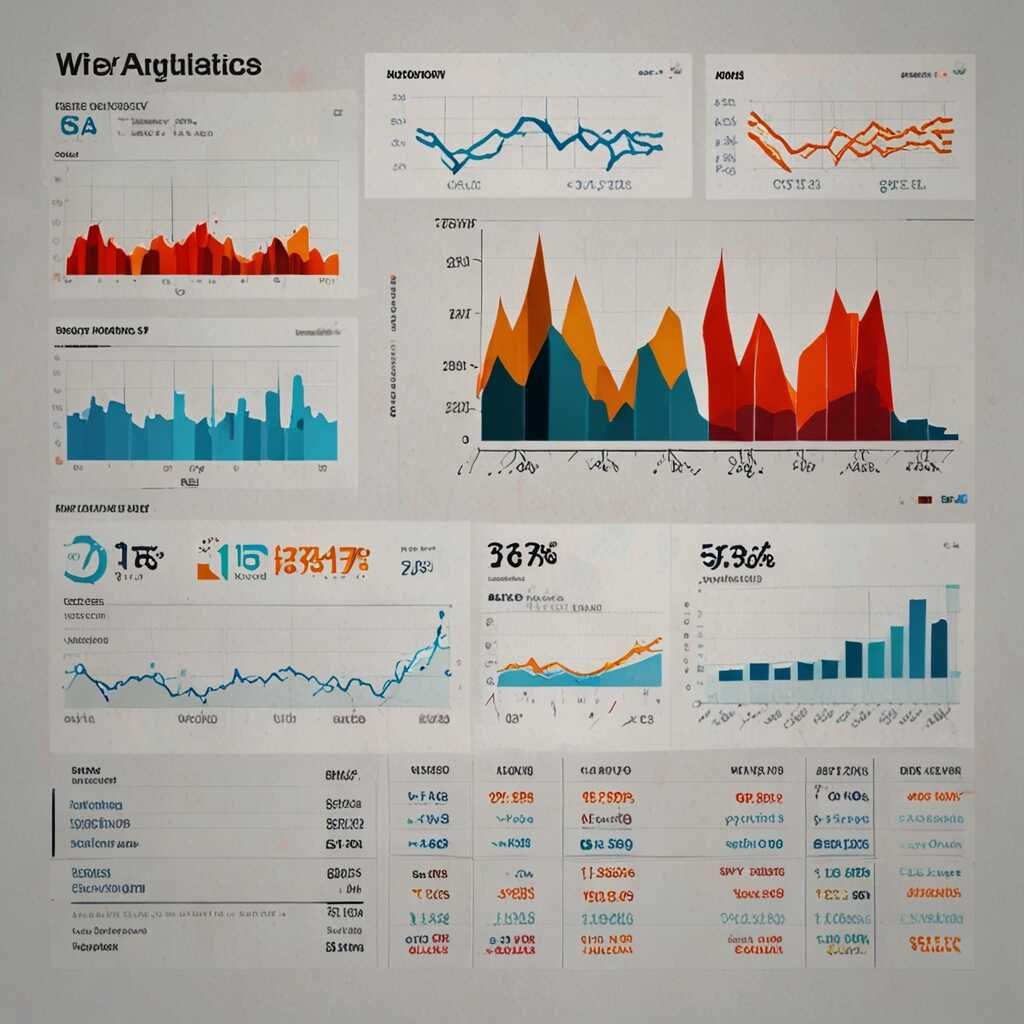Fixing manual actions in Google Search Console is crucial for recovering your website’s search rankings. When Google imposes a manual action, it can significantly impact your site’s visibility and traffic. At Metrics Rule, we understand the intricacies of these actions and can guide you through the process of resolving them to enhance your SEO performance. By addressing these issues effectively, you can improve your site’s standing in search results and attract more organic visitors.
Understanding Manual Actions in Google Search Console
Manual actions in Google Search Console are penalties imposed by Google on a website due to violations of its Webmaster Guidelines. These actions can severely impact your site’s visibility in search results. Common issues that lead to manual actions include spammy content, unnatural links, and keyword stuffing. It’s crucial to address these issues promptly to prevent long-term damage. Understanding the manual action recovery process involves submitting a reconsideration request, which can take anywhere from several weeks to months for resolution, depending on the severity of the issue and the quality of your submission.
Common Issues That Lead to Manual Actions
Multiple factors can contribute to manual actions, severely affecting your website’s performance. Content that is deemed deceptive or includes excessive keyword stuffing is a frequent culprit. Additionally, sites that acquire unnatural links, possibly through manipulative link-building practices, also face penalties. Ensuring compliance with Google’s guidelines is essential for maintaining a reliable online presence. Recovery demands careful attention to detail in the reconsideration request, which includes thorough documentation and evidence of corrective measures taken. By focusing on enhancing the quality of your site’s content and links, you can improve your chances of reversing a manual action and recovering your search engine visibility.
How to Access and Identify Manual Actions
To access Google Search Console and find any manual actions affecting your website, start by logging into your account. Once logged in, navigate to the “Security & Manual Actions” section on the left sidebar. Click on “Manual Actions” to view any identified issues. You will find notifications and warnings that detail the nature of the manual actions taken against your website. Reviewing these notifications is essential for understanding how they may impact your site’s performance in search engine results. Identifying manual actions early is critical to recovering your website’s ranking.
Types of Manual Actions and Their Implications
There are several types of manual actions that can affect your website’s performance, including “Spam,” “Unnatural Links,” and “Thin Content” actions. Each type addresses specific issues that violate Google’s guidelines. For instance, a “Spam” action may relate to unwanted or deceptive content, whereas “Unnatural Links” pertains to links aimed at manipulating search rankings. Knowing these types helps you quickly identify the necessary corrective measures. Regularly checking for manual actions and understanding their implications enhances your website’s credibility, ultimately improving its chances of ranking higher.

Common Reasons for Manual Actions and Prevention Tips
Manual actions in Google Search Console can result from various issues, notably low-quality links and misleading content. When your website has low-quality links, Google may think it is trying to manipulate search rankings, leading to a manual action. Similarly, using misleading or spammy content can also trigger scrutiny. To proactively avoid these pitfalls, website owners must implement effective manual actions prevention strategies. These strategies include regularly auditing your link profile for quality and relevancy, ensuring all content adheres to Google’s guidelines, and continuously testing your site for technical SEO improvements, including loading speed and mobile optimization. Monitoring user feedback and maintaining quality are essential for a sustainable online presence.
Effective Strategies for Ensuring Quality and Preventing Manual Actions
Implementing effective strategies for ensuring quality can significantly help in preventing manual actions. Start with a robust content review process to eliminate misleading or low-quality content and regularly update your website to reflect accurate, trustworthy information. Conduct technical SEO analysis to identify and rectify website errors, enhancing crawling and indexing capabilities. Utilize tools to monitor link quality and disavow any harmful links that could lead to penalties. Regular performance testing of your website helps pinpoint areas for improvement. The combination of these approaches ensures that your site maintains a good standing with search engines, thus minimizing the risk of manual actions.
Numerical Insights into Addressing Search Engine Penalties
- Approximately 90% of manual actions stem from unnatural links or spammy content.
- The average time to resolve a manual action is around 14 business days.
- Search rankings can improve by over 50% after successfully appealing a manual action.
- About 66% of websites that fix penalties regain their previous traffic levels.
- There are over 1,000 algorithms in Google that can lead to manual actions.
- Nearly 30% of small businesses face penalties due to improper SEO practices.
- On average, websites that have a clear action plan recover rankings within three months.

Steps to Remedy Manual Actions on Your Site
To enhance your website compliance and recover search rankings, it’s crucial to first identify the specific types of manual actions impacting your site. Manual actions can range from unnatural links to issues related to misleading content. Use Google Search Console to check for these manual actions by navigating to the ‘Security & Manual Actions’ section. From here, assess the details provided for each action. Once you have identified the issues, you will need to follow best practices to align your site with Google’s guidelines. After applying the necessary fixes, you can submit a reconsideration request. Historically, a reconsideration request can take anywhere from a few days to several weeks for Google to review and provide feedback.
Understanding the Types of Manual Actions
Manual actions fall into several categories, such as ‘Unnatural Links’, ‘Spam’, and ‘Thin Content’. Unnatural links often arise from link schemes intended to manipulate rankings. Spam actions typically involve deceptive or misleading content, while thin content refers to pages that offer minimal value to the user. Each category requires a tailored approach to resolve the issues effectively. For instance, if you face unnatural link penalties, you should conduct a thorough backlink audit to identify and disavow harmful links. This targeted method not only increases reliability but also enhances your chances of lifting the manual action imposed by Google. Proper testing and experience in SEO best practices significantly aid in effectively addressing these challenges.

How to Submit a Reconsideration Request
A reconsideration request is a formal appeal to Google, made after you have addressed the issues that caused a manual action on your website. This request is crucial because it signals to Google that you have taken the necessary steps to comply with their guidelines. When drafting your request, focus on clearly outlining your corrective actions. Include specific details such as the nature of the manual action, your understanding of why it occurred, and the steps you’ve taken to prevent it from happening again. For a persuasive request, ensure you maintain a professional and respectful tone, while being concise and transparent about your actions.
Key Elements to Include in Your Reconsideration Request
When composing your reconsideration request, there are several key elements to highlight. Begin with a summary of the manual action, explaining its impact on your site’s performance and search rankings. Next, detail the corrective actions you’ve implemented. This should include evidence of changes made, such as website monitoring, SEO audits, and content updates. Providing screenshots or links to relevant resources can enhance your request’s reliability. Lastly, emphasize your commitment to following Google’s guidelines in the future, ensuring you are recognized as a proactive web steward. With a carefully crafted reconsideration request, you increase your chances of recovering your site’s standing in Google’s search results.
Advantages of Remediating Search Engine Actions
- Enhancing website credibility leads to improved user trust and engagement.
- Fixing penalties can significantly increase organic search visibility.
- Effective resolution of manual actions can lead to higher conversion rates.
- Improving compliance with Google’s guidelines reduces future risks.
- Fixing issues fosters a better overall user experience on the website.
- Regular audits after resolving penalties help maintain sustained search performance.
- Enhanced website performance often results in increased traffic and business growth.

Assessing the Impact After Manual Action Fixes
To evaluate the effects of manual action fixes, focus on essential metrics in Google Search Console. Start with the “Coverage” report to check how many pages have returned to good standing. Monitor the “Performance” report to see how clicks, impressions, and keyword rankings change over time. Analyze how the recovery impacts user engagement metrics, such as bounce rates and time spent on site. While some keywords may improve faster than others, addressing manual actions generally leads to improved SEO performance indicators.
Key Metrics to Track for Website Recovery
When tracking website recovery post-manual action fixes, pay attention to key metrics in Google Search Console. Analyze “Clicks” and “Impressions” to ensure your pages gain organic traffic again. Assess “Average Position” for individual keywords to monitor their ranking improvements. Use the “User Experience” metrics, like average time on page and bounce rate, to understand how visitors interact with your site after fixes. This comprehensive approach enhances your understanding of the recovery process and helps ensure consistent improvements across all affected pages.
Developing a Strategy to Prevent Future Manual Actions
To prevent future manual actions in Google Search Console, website owners must adopt proactive SEO practices. Essential strategies include conducting regular website audits to identify compliance issues, optimizing site speed for better user experience, and ensuring all content adheres to Google’s guidelines. It’s crucial to monitor and review backlinks regularly to avoid unnatural link patterns. Additionally, leverage tools for technical SEO to enhance site structure and crawlability. This comprehensive approach helps ensure reliable performance and reduces the risk of penalties.
Key Factors for Maintaining Website Compliance
To maintain website compliance, focus on implementing technical SEO strategies that improve indexing and crawling efficiency. Regularly audit your site’s content for quality and relevance. Keep an eye on updates in Google’s search algorithms, as understanding these changes can significantly influence your site’s reliability in search results. Engaging in keyword research is vital to ensure your content remains targeted and aligns with user intent. Moreover, maintaining a clean backlink profile is necessary for avoiding manual actions. Research proven best practices for building links to ensure that your site stands out positively in Google’s eyes.
Key Players and Their Role in Addressing Search Penalties
- Google Analytics: Offers insights into website performance and penalty alerts.
- SEMrush: Provides tools for tracking and analyzing SEO improvements.
- Ahrefs: Great for link audits but may overwhelm newbies with data.
- Moz: User-friendly with resources but can be pricey for small budgets.
- Yoast SEO: Helps optimize WordPress sites but lacks deep analytics features.
- Majestic: Focused on backlinks, benefits seasoned SEO professionals.
- Sitebulb: Excellent for visual reports but may not suit everyone’s style.
Reviewing Google’s SEO Guidelines for Best Practices
Understanding Google’s SEO guidelines is essential for any website aiming for high search engine rankings. These guidelines focus on quality content, user experience, mobile optimization, and secure browsing. Utilizing technical SEO strategies, like optimizing loading speed and ensuring efficient crawling and indexing, can greatly enhance compliance with these practices. Monitoring compliance continuously provides insights into potential issues before they escalate into manual actions. Additionally, Google’s best practices include around 200 ranking factors, requiring a continual review and adaptation of your strategies to align with these updates.
Key Techniques for Compliance and Optimization
Implementing key techniques for compliance significantly improves your search engine standing. This includes conducting regular website audits to check for broken links, analyzing website performance, and leveraging tools like Google Analytics. Integrating effective search engine optimization best practices in your content creation helps ensure relevance and high-quality user engagement. Furthermore, optimizing for mobile users is crucial, as Google prioritizes mobile responsiveness. Employing a robust SEO strategy designed around Google’s guidelines will provide long-term benefits, enabling your website to handle traffic demands while maintaining search engine visibility.
